What are the key issues on the Darent and Cray?
Water Quality
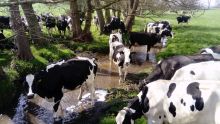
Fish and aquatic wildlife rely on good quality water in which to live. Fish and invertebrates breathe oxygen that they take from the water through their gills, so river water must contain enough oxygen to support life. When organic material like sewage or animal waste pollutes water, bacteria feed on the organic material and use up oxygen during their metabolic processes, leaving levels in the water low enough to threaten aquatic wildlife.
Pollution enters the river channel by two main mechanisms: point sources (which are direct inputs such as sewage treatment or industrial discharges) and diffuse sources (which are more subtle pathways by which potentially-polluting substances leach into rivers as a result of rainfall, soil infiltration and runoff from roads and other impermeable surfaces).
Other sources of pollution include pesticides, which are directly toxic to aquatic wildlife, and nutrients, from wastewater treatment and agricultural fertilisers, which enrich the aquatic environment, a process known as eutrophication. Eutrophication leads to accelerated growth of algae and lowers the diversity of the aquatic plant community which drives changes higher up the food chain and the ecosystem as a whole.
Water Quantity

The aquifers that provide the flow of water in the Darent and Cray are used for drinking water supply in the South East. However, this abstraction can emphasise the effects of drought. Abstraction became a critical issue in the 1980s and 1990s, and a great deal of good work was carried out by the local Darent River Preservation Society (DRiPS) to reduce the quantities of water abstracted from the aquifer and to increase the river's resilience to drought.
Damming the Flow
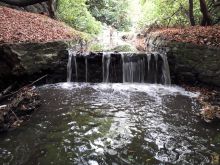
Historically, the rivers Darent and Cray powered a large number of watermills (the Cray’s 9 mile length supported 14 historic mills, while the Darent’s 20 miles had 29 mills). Many of these mills' weirs are still in place, but are now falling into various states of neglect or disrepair. These structures fragment and degrade the river habitat for fish and other wildlife, by siltation, degradation of water quality etc. In certain situations, in addition to the other environmental impacts, redundant structures may also increase flood risk. They may do this by artificially raising upstream water levels or increasing the risk of channel blockage by trapping large debris. This leads to water being pushed onto the floodplain earlier and more frequently than may otherwise be the case.
Where there are opportunities to remove redundant structures, these should be explored, with careful engagement with river users since weirs and their impoundments are often valued by people, and provide an amenity and recreational resource. Addressing this issue while paying attention to and within the context of the heritage value of these structures is important, so as not to harm the landscape or local historical interest. More information about how these structures affect the fish community of the river can be found here: http://www.southeastriverstrust.org/how-weirs-affect-fish-communities/
Physical Modification
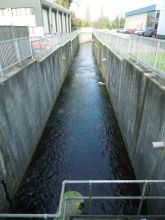
The Darent and Cray have been modified for many reasons including flood risk management, agriculture and urbanisation. As a result, the habitats in these rivers have been degraded, and aquatic wildlife has been affected. Many local people believe that this situation should not continue, and that every effort should be made to bring the rivers back to life for the benefit of the community. Any future housing or industrial developments should be sympathetic to river morphology, and natural processes and functions should be maximised through the planning system.
Efforts will focus on addressing the negative impacts of physical modification and renaturalising the river channel where possible. This will include improving the quality of the river and its immediate surroundings, allowing better conditions for the movement of fish and other wildlife, and providing an attractive environment for visitors to the river to enjoy.
Habitat Type and Quality
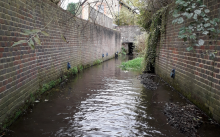
River modification and management practices have damaged river habitats, reducing and limiting the quality of habitats normally associated with chalk steams. Legislation and the desire to live in a natural landscape with an abundance of wildlife (which is known to promote good health, wellbeing and a better quality of life) have prompted the restoration or enhancement of many habitats, including freshwater habitats like rivers. 'River restoration' is the usual term for activities that help improve the environmental health of a river or stream, with the aim of restoring the natural processes of the river system to boost fish populations, biodiversity, recreational opportunities, flood management and economic development.
Invasive Non-Native Species (INNS)
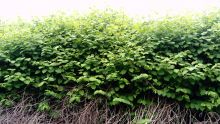
INNS present a huge risk to many rivers, and are having a large impact on the Rivers Darent and Cray.
Invasive plants like Himalayan balsam out-competes native vegetation by shading out the available light during the summer. In the winter, it dies back, leaving bare soils that are vulnerable to erosion. This not only increases the potential for excessive sediment in the river, it also reduces the available habitat for small mammals and insects during the winter. Now widespread in the UK, Himalayan balsam is especially prevalent along urban rivers. It spreads solely by seeds, which are small and easily spread downstream by rivers. Himalayan balsam is listed under Schedule 9 to the Wildlife and Countryside Act 1981. As such, it is an offence to plant or otherwise allow this species to grow in the wild.
Other invasive species, such as the American signal crayfish, are prevalent in neighbouring rivers and parts of the Darent and Cray catchment at low levels, preventing their spread is of the utmost importance. All river users should follow basic biosecurity measures such as Check, Clean & Dry. More information available is here: http://www.nonnativespecies.org/checkcleandry/